In the realm of plant care, succulents and cacti are prized for their unique aesthetic and low maintenance requirements. However, to achieve optimal growth and vibrant appearances, these hardy plants benefit immensely from the right fertilization routine. This blog is dedicated to exploring the benefits and techniques of using organic fertilizers specifically designed for succulents and cacti. We will delve into the specific nutrients that these plants require, how organic options can improve their health, and provide practical tips for application. Whether you are a seasoned gardener or a novice plant enthusiast, this guide aims to equip you with the knowledge to nurture your succulents and cacti to their fullest potential.
Why Use Organic Fertilizer for Your Succulent Plants?
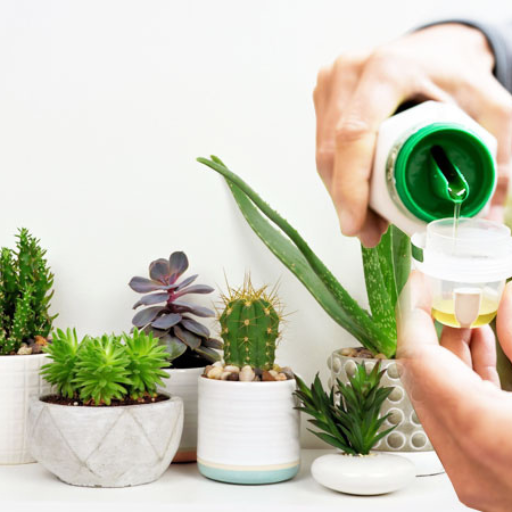
Advantages of Organic Succulent Fertilizer
Organic fertilizers for succulents are beneficial in many ways that contribute to their general wellbeing and growth. For example, they provide a balanced supply of essential nutrients like nitrogen, phosphorus and potassium to encourage strong root systems and lush foliage. On the other hand, organic fertilizer releases the nutrients slowly so as to be consistent with natural succulent life cycles, unlike chemical based fertilizers. Moreover, improved soil structure; as well as enhanced microbial activity for nutrient absorption and plant richly are some aspects that make organic fertilizers worthwhile. Lastly, they do not have chemicals hence no possibility of them causing pollution through chemical runoff thus promoting sustainable gardening.
Organic Fertilizer for Healthy Growth of Succulents
By providing slow release essential nutrient elements like nitrogen (for leaf development), phosphorous (for root and flower strength) and potassium (for overall plant health), organic fertilizers promote healthy growth in succulents. Moreover, these materials go a long way in enhancing soil structure such as composting, worm castings or fish emulsion which helps retain moisture and air within the pores that are significant in the roots of these plants. Additionally, this type of fertilizer stimulates beneficial microbes within the soil necessary for breaking down organic matter into forms readily absorbable by plants. This relationship enhances root structure resulting into more robust plants able to resist pests and diseases better translating into healthier lush succulents.
Organic versus Inorganic Fertilizers
A comparison between organic and synthetic fertilizers reveals several important distinctions which influence plant growth as well as soil quality.
Composition:
- Organic Fertilizers: Usually contain both micro- and macronutrients from natural sources which are generally balanced. Their nutrient release is slow according to growth rates.
- Synthetic Fertilizers: They have quick solubility so that rapid nutrient release is possible although not necessarily suitable since concentrations may rise too high and then decline too fast.
Release of Nutrients:
- Organic Fertilizers: The release of nutrients is slow, thus making the emergence of leaching and nutrient runoff less likely.
- Synthetic Fertilizers: Fast rates of release may lead to nutrient leaching as well as spikes in availability of elements which are harmful for plants’ general health.
Soil Health:
- Organic Fertilizers: Enhances soil structure and increases organic matter content leading to improved water retention and aeration.
- Synthetic Fertilizers: Over time, they may destroy soil structure lowering the levels of organic matter that contribute negatively towards retaining moisture and enhancing air movement within soils.
Microbial Activity:
- Organic Fertilizers: They help develop good microbial environment in the soil by encouraging beneficial microorganisms to break down organic materials into forms that plants can use directly when absorbing them.
- Synthetic Fertilizers: Inhibit microbial activity thereby affecting soil biota resulting into reduced functionality and diversity of microbes.
Environmental Impact:
- Organic Fertilizers: Are safer since they pose minimal risk to the environment through chemical run-off or pollution effects when compared to inorganic fertilizers.
- Synthetic Fertilizers: Have higher chances of environmental contamination within runoff that may lead into water pollution since it affects aquatic ecosystems more than organic ones do
After considering these differences alongside their corresponding technical aspects such as nutrient release rates, effects on soil structure and implications for soil microbiota, informed decisions can be made by farmers based on their environmental conservation values as well as plant management needs.
What Types of Organic Fertilizers Are Best for Succulents?
Overview of Popular Organic Succulent Fertilizers
When selecting organic fertilizers for succulents, it’s important to choose options that provide balanced nutrition while ensuring proper drainage and preventing over-fertilization. Here are three popular choices:
- Composted Manure: Animal manure that has been well-composted is a good source of nutrients such as nitrogen, phosphorus and potassium, which helps in improving soil structure and water retention for supporting healthy root development. Use it sparingly and ensure it’s fully decomposed to avoid burning the plants.
- Worm Castings: Vermicompost or worm castings are very useful for succulents as they provide a balanced nutrient profile, encourage microbial activity and improve soil aeration. They release nutrients slowly so they can supply the plant steadily without overwhelming them.
- Fish Emulsion: This liquid fertilizer made from fish is rich in nitrogen and other vital elements. It can be easily absorbed by succulents hence promoting their robust growth. Its strong smell often necessitates mixing with other organic matter or diluting before applying.
Using these organic fertilizers can help maintain succulent health and support sustainable gardening practices.
Liquid vs. Granular Organic Fertilizers: Pros and Cons
Liquid Bio-fertilizers:
Advantages:
- Instant Nutrient Availability: They are very fast in action as they instantly provide nutrients to succulents which is very helpful during growing season.
- Ease of Application: By watering them, even distribution can be achieved hence over-fertilization risks are minimized.
- Adaptability: The concentration of liquid fertilizers can be adjusted so that nutrient content can be very accurate for the plant’s needs.
Drawbacks:
- More Regular Applications Required: As compared to granular fertilizers, their faster rate of absorption may call for more applications and higher maintenance costs.
- Storage and Handling: Liquid fertilizers are harder to store and handle because they spill easily sometimes having a shorter shelf life also.
Granular Bio-fertilizer:
Pros:
- Long Term Performance: Granules let out nutrient in a slow manner thus enabling continuous nutrition supply there by reducing frequency of application.
- Easy Storage: Generally easier for storage compared to liquid fertilizers with a longer shelf life than those ones in liquid forms too
- Enhanced Soil Structure: Over time, granular bio-fertilizer improves soil structure and aeration leading to healthy root development.
Cons:
- Slow Nutrient Release Rates: This may not suit succulent plants needing an instant nutrient boost.
- Risk of Over-Application: Inaccurate usage thereby causing uneven distribution or possible nutrient burn if not properly measured
Choice between organic liquid and granular fertilizer would depend on the immediate requirements of your succulents, your gardening routine and the ease of use preference as well as, long-term soil fertility. Both alternatives are beneficial but must be approached critically in order to maximize their productivity.
Choosing Organic Fertilizer for Different Succulent Varieties
This involves understanding what each species requires in terms of nutrients so that one sources nutrients accordingly. Most succulents usually do well when applied with supplements containing balanced amounts or slightly higher levels of phosphorous and potassium since the latter two promote root development besides boosting the plants’ immunity.
Aloe Vera does well with a balanced 10-10-10 or 15-15-15 type fertilizer that is applied at half the strength once or twice during its growth stage. For Echeveria varieties, it may be beneficial to use nitrogen heavy fertilizers in moderation, as excessive nitrogen can lead to elongated shoots. In order for Sedum flowers to blossom well and have sturdy leaves, they need a feed which has less of nitrogen but more phosphorous.
To use granular organic fertilizers incorporate them into the soil before planting or apply to the surface of planted areas. The liquid ones should be diluted following the instructions provided on their packaging by the manufacturer then applied when you are watering your crops. Always make sure you watch your succulents very closely after applying any of these so that in case they show signs of nutrient burn you can lower fertilizer amounts for healthy development.
How to Properly Fertilize Your Succulent Plants
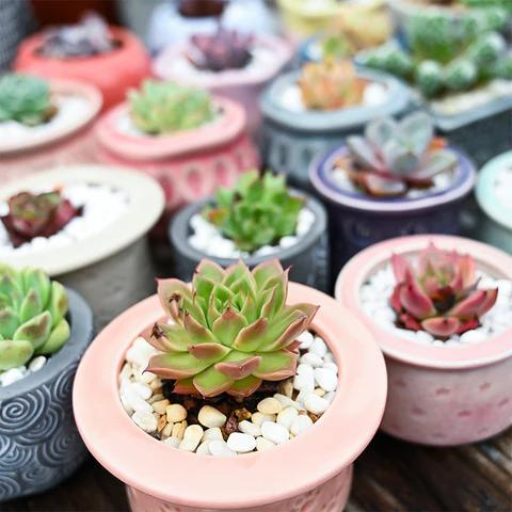
Step-by-Step Guide to Applying Organic Fertilizer
Choose the right fertilizer: Choose a suitable organic fertilizer for the succulent depending on its needs. Always opt for balanced formulae or those that are slightly higher in phosphorus and potassium. The liquid ones get absorbed quickly while granules usually provide sustained nourishment.
Dilute your Fertilizer: Dilute liquid fertilizers according to package instructions. This often means mixing a given ratio of the product with water. For granular ones, they may be mixed with soil or water depending on type.
Timing of Application: Apply fertilizer during the growing season of the succulent plant which is mostly spring and summer time. If one fertilizes during dormancy, it can stress these plants when they emerge from this phase of growth. For most succulents, one will apply fertilizer once or twice at active growth stage.
Application Method:
- Liquid Fertilizer: Water using diluted fertilizer mixture around root zone taking care it is distributed evenly.
- Granular Fertilizer: Then sprinkle the granules evenly over the soil surface keeping away from direct contact with leaves to prevent burn and finally water thoroughly, so as to allow nutrients penetrate deep into soil.
Monitor Plant Response: Watch how your succulents react after applying fertilizers as there could be nutrient burn due to excessive vegetative growth. Yellowing (scorching) leaves indicate over-fertilization leading to immediate drenching down of soil with water.
Adjust Accordingly: Change either amount or time between applying manure based on how plants respond to them. Generally succulents require little feeding than other plants in order not to overfeed them exercise caution by applying less rather than more manure.
Following these steps ensures that your succulents receive the necessary nutrients for healthy growth while avoiding the risk of over-fertilization. Always tailor your approach based on the specific requirements of your succulent species for optimal results.
Best Practices for Fertilizing Indoor vs. Outdoor Succulents
When it comes to fertilizing indoor and outdoor succulents, there are key practices that can help ensure their optimal health and growth.
Indoor Succulents:
- Frequency: Indoor succulents usually require less frequent fertilization compared to outdoor ones. During their active growth period, which is typically in the spring and summer, they should be fed once or twice a year.
- Light and Water: Indoor succulent plants may receive reduced natural light and waterings. This means that they don’t need much fertilizer due to low lighting and watering schedule.
- Use of Balanced Fertilizers: Always choose balanced fertilizer that is soluble in water at half the strength recommended for use so as to avoid burning nutrient into the plant tissues.
Outdoor Succulents:
- Enhanced Frequency: These outside conditions are often more natural with stronger growth cycles for outdoor succulents. Accordingly, they may be fertilized once every month during periods of active growth.
- Exposure to Elements: These succulents tend to get more sun, rain, wind or other elements and hence lose nutrients in soil quickly. To this end, regular manuring revitalizes these nutrients lost through such means.
- Specialized Fertilizers: Use fertilizers specially formulated for either cacti or succulent plants since these encourage robust growth enabling them adapt well under different climatic conditions outdoors.
General Tips:
- Avoid Over-fertilizing: If done excessively whether indoors or outdoors, leggy plants can occur due to burnt effect caused by too much fertilizer on this plant type. It’s important that you follow recommended dosage as well as frequency always.
- Tailor Based on Species: Different varieties have different nutrient requirements; thus amend your fertilizer schedule according to your specific species of succulent plants.
- Monitor and Adjust: Regularly check your succulents for symptoms of under- or over-fertilization, depending on which make adjustments. A healthy one will show firmness on its leaves as well as vibrant look.
By adhering to these best practices, you can ensure both indoor and outdoor succulents thrive in their respective environments.
Common Mistakes to Avoid When Using Organic Fertilizers
- Wrong Application Time: Inappropriate organic fertilizer application can create nutrient imbalances in your succulents. Fertilizing should be done during the active growth period rather than during dormancy.
- Over-fertilization: Excess does not translate into effectiveness. Overfeeding causes nutrient burn and thin out sickly growth. Ensure that you go by what is recommended by the company and use it accordingly.
- Ignoring Soil pH: The pH of your soil can be altered by organic fertilizers thus influencing how nutrients are absorbed. Keep testing for soil moisture as a way to make sure that it is within the right range for succulents, which is somewhere around 6.0-6.5.
- Not Composting Correctly: The inclusion of incomplete composts from homemade manures may expose your crops to pathogens or pests. Please confirm that before applying, all your compost has already decomposed fully.
- Uneven Distribution: If the fertilizers have been unevenly distributed there will be unequal growth patterns and some parts of the soil may contain more nutrients than others. To achieve an even distribution mix the fertilizer well with the soil.
By steering clear of these common mistakes, you can make the most of organic fertilizers and help your succulents thrive.
How Often Should You Fertilize Succulents?
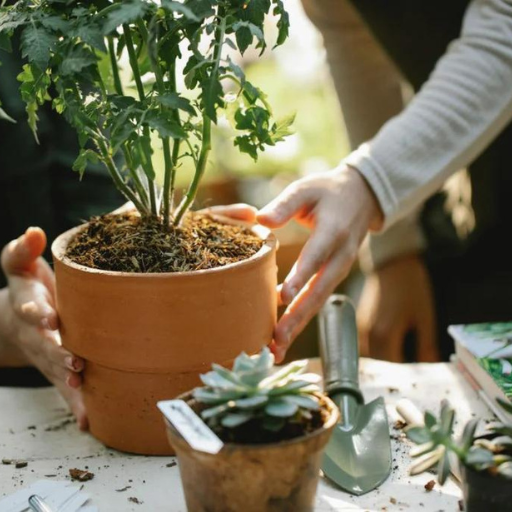
Succulent plants require different fertilizing plans for each season
When it comes to fertilizing succulents, the trick is to vary your approach according to the seasons. In active growth seasons like spring and summer, succulents can be given a monthly application of a balanced diluted organic fertilizer. During this period they actively absorb nutrients which encourage healthy growth and vibrant foliage. In contrast, during autumn and winter months, their dormancy requires minimal or no fertilization at all. Over-fertilizing in dormancy may result in weak and spindly growth. It should, therefore, be noted that observing how an individual plant grows will enable one adjust feeding frequency so as to maintain best health and looks.
Indications That Your Succulents Need Nutrients
Knowing when your succulents lack nutrition is crucial in maintaining their health and beauty. One of the most common signs is slow growth rates than usual. In case you realize that plants are not growing at a normal rate then it could be time to consider manuring them with the right amount of nutrients that they need for healthy vegetation. Discolored leaves are another sign that tells if there’s any deficiencies among these plants. Succulent with yellowing or pale leaves often indicate nutrient deficiency especially nitrogen deficiency is the most common cause of this condition. If despite watering as supposed to your succulent leaves have become soft/shriveled or lost their firmness then probably they need more nutrients supplied into the soil surrounding them. Lastly, poor flowering in succulent varieties known for their blooms can also be a clue towards lacking some vital minerals in them By keeping an eye out for these signs, you can ensure your succulents receive the nutrients they need.
Frequency Recommendations Depending on Succulent Types
The frequency of fertilization can vary depending on what type of succulent you’re growing it really depend on the type of succulent one is cultivating. In general, most succulents benefit from a single feed during their growth season. A monthly dose of diluted and balanced organic fertilizer during spring and summer months will be ideal for common ones like Echeveria ad Haworthia. For cacti and other slowly growing types of succulents, feeding them in the spring as well as summer once would be enough. Conversely, avoid fertilizing during the dormant winter months, as most succulents do not actively grow and can suffer from over-fertilization. Aloe plants are however more hardy hence can receive nutrients every two months throughout their growing time . Always adjust your fertilization schedule to meet specific needs of your kind of succulent so that you can enhance good health and growth in it.
Customer Reviews and Recommendations
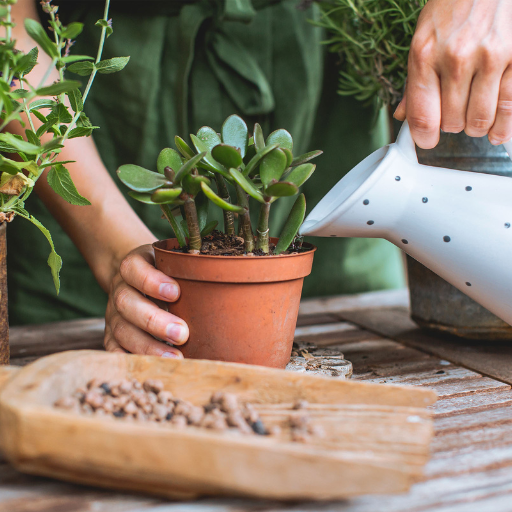
Organic Fertilizers with the Highest Ratings According to Users
Among user reviews and feedback, I noticed that three organic fertilizers consistently stand out for succulent plants. The SHANDONG LOYAL CHEMICAL Organic Cactus Mix is the most recommended because of its balanced nutrients and ease of use. It supplies an adequate nutrient level without fear of over-fertilization according to its users. In addition, the Miracle-Gro Succulent Plant Food is a highly rated product that has been effective and very convenient in many ways as it comes packed with fast-absorbing formulae that boosts growth as well as vitality. Finally, Dr Earth Exotic Blend Cactus & Succulent Fertilizer usually receives much attention due to its natural ingredients and sustainable production; customers love it for promoting both plant health and environmental consciousness. For keeping succulents vibrant and healthy, these are some of the top-rated fertilizers that you can think about.
Success Stories on Customers using Organic Fertilizers
I have used the recommended organic fertilisers for my succulents myself with fantastic results. For example, I noted significant improvements in my plants’ health as well as growth rate after incorporating SHANDONG LOYAL CHEMICAL Organic Cactus Mix into my regular routine. Its nutritional balance ensured neither underfeeding nor overfertilization for my bamboo palms hence became a dependable choice for every day care.
Similarly, using Miracle-Gro Succulent Plant Food has been a game-changer, particularly because of its quick-absorbing formula. In a few weeks’ time, there was an obvious difference in the liveliness and strength of my plants. It also saved me time by being convenient to use allowing me to easily apply it without much ado.
Lastly, the Dr. Earth Exotic Blend Cactus & Succulent Fertilizer won people’s hearts through including environmentally friendly features in their products. That way I had not only taken care of their natural environments but also complied with my eco-conscious wishes. This led to my lush, vibrant plants that thrived due to the fertilizer’s organic and high-quality ingredients.
In conclusion, a healthier and more resilient succulent can result from these highly-rated organic fertilizers thus emphasizing the need for choosing a fitting product for their particular requirements.
Frequently Asked Questions (FAQs)
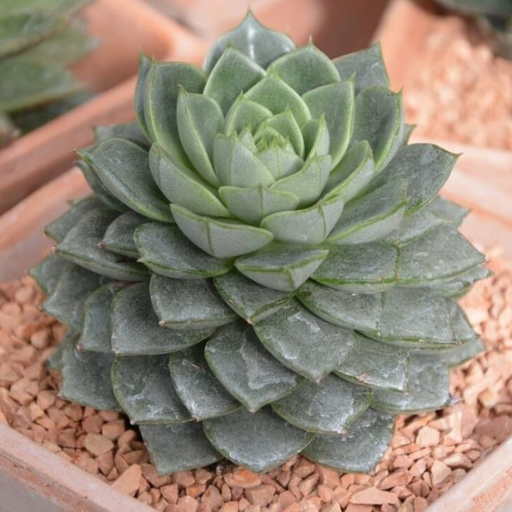
Q: What differentiates organic fertilizers for succulents and cactus from ordinary ones?
A: Organic succulent fertilizer and cactus fertilizer are made from sustainably sourced inputs and have an organic certification. Consequently, these do not have any artificial chemicals, instead they nourish the plants in a way that has regard to the environment thereby helping cacti and succulents grow beautifully.
Q: How Often Should I Use Fertilizer on My Succulents and Cactus Plants?
A: For best growth of the plant, liquid plant food should be applied every time you water your plant during the growing season. Also, slow release organic plant food spikes can be used as per instructions stated on their packaging.
Q: Can I use organic cactus and succulent fertilizers both indoors and outdoors?
A: Yes, such as Espoma Organic Cactus are effective for indoor plants including outdoor cactuses that supply balanced nutrients to promote healthy growth in a wide range of environments.
Q: What Are The Advantages Of Using Liquid Plant Food On My Succulents And Cactus?
A: It is easy to apply liquid manure that is readily taken by plants upon its application thus giving them instant nutrients. In fact it’s ideal for them as it provides them with NPK ratio suitable for their growth hence Microlife Cactus liquid plant food can be recommended.
Q: How Do I Go About Selecting The Right Organic Fertilizer For My Succulent Plants And Cacti?
A: Choose a product certified organic specifically intended for use on your cacti and/or succulent plants like Dr. Earth or Espoma Organic Cactus Plant Food. Always remember to go for those having 1-1-2 ratios among other things.
Q: Are There Certain Types Of Organic Fertilizer That Are Recommended For Different Kinds Of Cactus Such As Christmas Cactus?
A: Yes, certain types of cactus are best suited with some fertilizers; for instance, Espoma Organic Cactus Plant Food has been particularly developed to supply Christmas catcus with its unique nutrient requirements.






